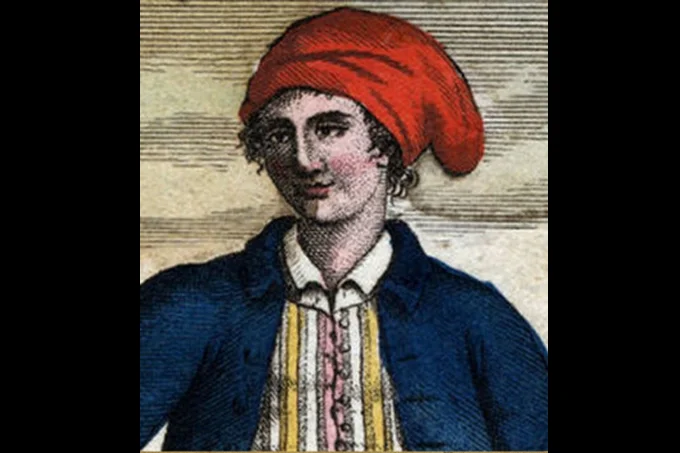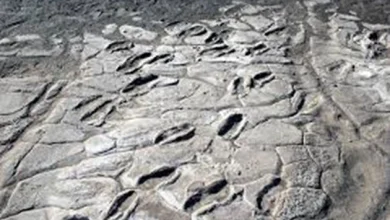How a woman pretended to be a male nerd to take a 10-year trip around the world

Jeanne Baret was a French botanist and is believed to be the first woman to circumnavigate the globe, sailing across all the oceans on Earth in search of new yet undiscovered plant species.
At the time, this was quite a feat, and her journey was by no means an easy one. Moreover, due to the restrictions that women constantly faced at that time, she had to pretend to be a man for a long time.
Who is Jeanne Baret
Jeanne was born on July 27, 1740, in a small town in Burgundy, France. She spent the first years of her life on the family farm with her father, who died in 1762. Spending all her free time in nature, the girl learned to collect herbs and learned a lot about them. Although she never received any special education, the young woman acquired a vast knowledge of botany.
After her father’s death, Jeanne Baret had to start earning her own living on her own. There weren’t many options. Jeanne’s education was the simplest, nothing outstanding. Therefore, the choice fell to go from the housekeeper to an influential person, nevertheless, the girl learned to manage the household at home.
In 1760, Jeanne successfully got a job as a housekeeper in the home of the naturalist Philibert Commerson. Known for serving as a botanist at the court of Louis XVI, this French naturalist was captivated by Jeanne’s intelligence and quickness of mind. Commerson became her guide in the scientific world of botany, gladly explaining all incomprehensible aspects and answering numerous questions. To get the latest stories, install our app here
Guide to the world of botany
However, not only business relations connected Jeanne with the scientist. After the death of his wife, Jeanne became the mistress of Philibert, who was only 13 years older than her. They even had a baby. But because of his illegitimacy (Philiber and Jeanne were never married), it was decided to give the child up for adoption.
When Commerson became the official botanist of the French court, Jeanne went with him to Paris and continued to work as his housekeeper and personal nurse. In 1765, fearful of being far outmatched by their big rivals, Great Britain and Spain, the French government commissioned admiral and explorer Louis-Antoine Bougainville to open new territories for the Crown.
Bougainville immediately thought of Commerson and offered the scientist a place of honor on his ship. Philibert agreed but set a strange condition: he would not go anywhere unless a faithful assistant was invited along with him. The admiral did not suspect any trick in the request and easily gave his consent.
It was unthinkable for a woman to go on such an expedition. And the point is not even so much in the absence of emancipation but in the fact that women, in principle, were strictly forbidden to be on the ships of the French fleet. Perhaps this was due to the belief that they bring trouble, or perhaps the captains did not want to spend all their free time on the strife between the team and the maintenance of moral principles.
Commerson and Jeanne devised a plan so that she could come aboard without issue. And in the end, they found a solution: Jeanne would change into a man and temporarily become Jean.
World trip and first discoveries
The Bougainville expedition consisted of two ships, the Grumble and the Star, which sailed from Nantes in 1766. One of the first stops was in Montevideo (present-day Uruguay), where health problems, complicated by a recurring leg ulcer, temporarily put Commerson out of action. He practically did not leave his cabin on the Zvezda, and Jeanne Baret had to take on almost all the work.
In Brazil, Jeanne made a discovery that fascinated her: a spectacular climbing plant, which she generously named “bougainvillea” after the fearless admiral and leader of the expedition, Louis-Antoine Bougainville. After all, much of the painstaking work of collecting and cataloging the plants during the trip was done by Jeanne herself. The young woman managed to collect from 3,000 to 6,000 new plants. These were amazing results.
Mystery of the woman on board
Even though the expedition was quite successful, the journey was not calm at all. Like the rest of the crew, Jeanne had to face terrible storms while crossing the Strait of Magellan and many problems, to which in her case was added the need to always be vigilant so as not to reveal her secret. Sailors have always been very superstitious people, if they knew that there was a woman on board, it could end badly for Jeanne.

But in such a small setting, rumors that there was a woman on board spread, and many sailors began to point to Jeanne. One of the expedition members, François Vives, wrote in his memoirs that in view of the rumors, Jeanne eventually told her comrades that she had been castrated by Ottoman pirates, which they apparently believed. However, even with such a “plausible” lie, leading a whole crew by the nose did not work out for a long time.
While it is not known exactly how this happened, Jeanne’s identity was eventually revealed upon her arrival in Tahiti. There are those who say it was the island natives themselves who ratted her out to the crew after learning of her gender, while others instead argue that it was the crew themselves who finally figured out the truth.
To get the latest stories, install our app here
Apparently, in the end, Jeanne was cornered, stripped, and abused at gunpoint. True, some historians believe that the tragedy itself never happened, there were only attempts on the part of the team, so the admiral resolved the controversial issue quickly and radically. Bougainville, who could not risk returning to France with a woman who had come from nowhere on board, made the controversial decision to abandon her with Commerson in Mauritius.
Ten years on the way home
During their stay in Mauritius, invited by the island’s governor Pierre Poivre, the couple made several trips to Madagascar, which Commerson described as “the naturalist’s promised land”.
Jeanne continued to work as Commerson’s housekeeper and assistant until his death in March 1773. However, after the death of Philibert, the life of a woman became even more complicated. To somehow survive, she had to open a lounge in Port Louis.
Although the occupation was completely unsuitable for any respectable lady, however, it allowed her to have a roof over her head. It was also how she met Jean Dubernat, the French naval officer who later became her husband and helped her return to her homeland.
France award for contributions to botany
Jeanne married on May 17, 1774. The return to her homeland allowed her to complete her round-the-world trip. Once at home, Jeanne was surprised to learn that Commerson had named her his heiress and left a significant amount. She turned into a rich woman from an unknown woman in the blink of an eye.
Jeanne Baret received a lifetime pension from the French government and recognition for being part of the first French expedition to circumnavigate the world ten years later. Jeanne Barret died at Sainte-Oley, France, on August 5, 1807, at the age of 67.
Many people have been able to travel around the world. Some of them were outstanding and extraordinary personalities, including a traveler without fingers, a man-record, and other extreme people.
To get the latest stories, install our app here




